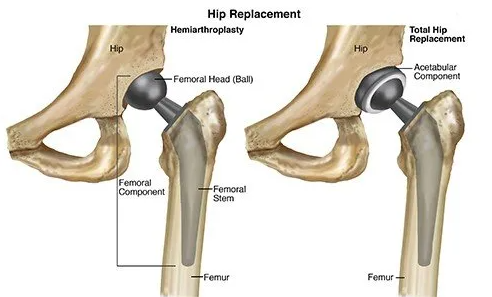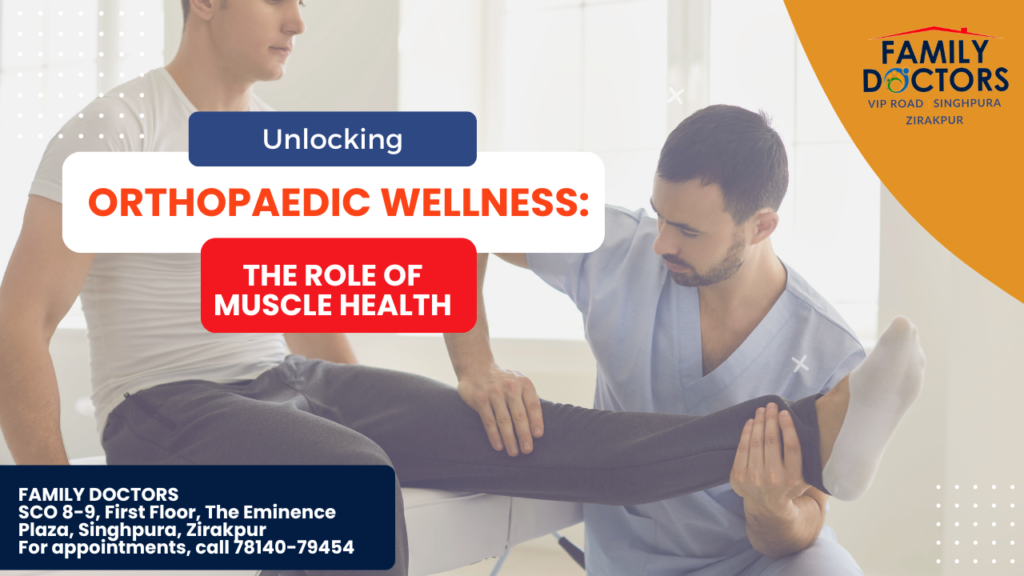🌨️ Introduction: When the Cold Season Brings Back Old Pain
As the chilly winds of winter start sweeping across Zirakpur and nearby regions, many people notice an all-too-familiar feeling — the return of old body aches. That dull knee pain, the stiffness in your shoulders, or the backache that had almost disappeared suddenly starts bothering you again.
If you’ve ever wondered why this happens, you’re not alone. It’s not just “in your head.” The cold weather can genuinely affect the way your joints, muscles, and bones feel. As an orthopedic specialist, Dr. Mohit frequently sees a rise in patients complaining about joint pain, stiffness, and muscle discomfort as soon as temperatures drop.
Let’s explore the science behind this seasonal pain and discuss practical, doctor-approved tips to keep your body comfortable this winter.
❄️ Why Do Old Pains Return in Winter?
There are several physical and environmental reasons why your old injuries or chronic pains seem to worsen during cold weather.
Drop in Temperature Affects Blood Flow
When the temperature falls, your body automatically tries to conserve heat by narrowing (constricting) the blood vessels in your skin and extremities.
This reduces blood flow to your joints and muscles, leading to:
-
Stiffness and tightness in muscles
-
Less oxygen and nutrients reaching the tissues
-
Slower healing or increased pain sensation
People with arthritis, previous fractures, or joint injuries are especially sensitive to these changes.
Changes in Barometric Pressure
Before it rains or turns cold, the atmospheric (barometric) pressure drops. Lower pressure can make tissues in your body expand slightly — especially around joints with inflammation or scar tissue.
This creates additional pressure within the joint, causing:
-
A feeling of heaviness or swelling
-
Increased joint pain and sensitivity
That’s why many people with arthritis or old injuries can “feel” the weather changing before it actually does.
Reduced Physical Activity
Winter often means fewer outdoor walks and more time under warm blankets. But less movement leads to:
-
Poor lubrication of joints (synovial fluid doesn’t circulate properly)
-
Weakening of muscles supporting the joints
-
Stiffness and reduced flexibility
The result? Pain flares up, even in areas that had been pain-free during more active months.
Muscle Tightness and Nerve Sensitivity
Cold weather causes muscles to contract and become tense. This tension can compress surrounding nerves, making pain signals more intense. For people with sciatica, cervical spondylosis, or lower back problems, this can mean sharper pain or numbness during the cold season.
👴 The Role of Age: Why Seniors Feel It More
Age plays a significant role in how the body reacts to temperature changes.
As we grow older:
-
The cartilage that cushions the joints naturally wears down.
-
Synovial fluid, which keeps joints lubricated, decreases in quantity.
-
Bone density may reduce (osteoporosis), making bones more fragile.
-
Blood circulation becomes less efficient, and tissues take longer to warm up.
Because of these factors, senior citizens are more prone to joint stiffness, arthritis pain, and muscle soreness in the winter months.
Dr. Mohit Bansal emphasizes that while age is a contributing factor, the right care and lifestyle changes can make a huge difference in comfort and mobility.
The good news? You don’t have to suffer through the season. With simple daily habits and orthopedic care, you can significantly reduce winter aches.
Here are Dr. Mohit’s top recommendations for his patients in Zirakpur and Tricity:
1. Stay Warm and Layer Up
-
Keep your knees, elbows, and back covered and warm.
-
Use thermal wear, woolen socks, and gloves.
-
A warm shower or heating pad in the morning can help loosen stiff joints.
-
Avoid sudden exposure to cold air, especially after exercise or physiotherapy.
2. Keep Moving — Don’t Let the Cold Stop You
It’s tempting to avoid physical activity in winter, but that’s when you need it the most.
-
Try gentle stretching, walking, or yoga for 20–30 minutes daily.
-
Regular movement helps improve blood flow, joint flexibility, and muscle strength.
-
Even simple range-of-motion exercises can prevent stiffness if you work long hours at a desk.
3. Use Heat Therapy
Applying warmth helps improve circulation and reduces pain.
-
Use a hot water bottle, heating pad, or warm towel on affected joints for 10–15 minutes.
-
For arthritis, paraffin wax baths for hands or feet can be very soothing.
-
Avoid direct high heat — keep it comfortable to prevent burns.
4. Eat a Joint-Friendly Diet
Nutrition plays a key role in joint health:
-
Omega-3 fatty acids (in fish, flaxseeds, walnuts) help reduce inflammation.
-
Vitamin D and Calcium strengthen bones — exposure to morning sunlight is especially important in winter.
-
Stay hydrated — even if you don’t feel thirsty, drink enough water to keep tissues flexible.
5. Maintain a Healthy Weight
Extra body weight puts more stress on your knees, hips, and spine.
Winter comfort foods are hard to resist, but a balanced diet and mild exercise routine can prevent unwanted weight gain and pain.
6. Watch Your Posture
-
Use back support while sitting for long periods.
-
Avoid bending suddenly or lifting heavy objects in cold weather.
-
Keep your workstation ergonomically correct — it prevents muscle strain and shoulder-neck stiffness.
7. Don’t Ignore Persistent Pain
If pain continues despite home remedies, consult an orthopedic specialist.
Dr. Mohit advises early evaluation for:
-
Persistent joint stiffness or swelling
-
Pain interfering with daily activities
-
History of arthritis, osteoporosis, or old injuries
Proper diagnosis through X-rays, bone scans, or physiotherapy assessment can help detect the root cause and prevent complications.
🌟 The Role of Physiotherapy and Lifestyle Care
In Zirakpur’s winter, combining medical treatment with therapeutic exercises gives excellent results.
Physiotherapy can help with:
-
Muscle relaxation and strengthening
-
Improving joint mobility
-
Pain relief through ultrasound or electrotherapy
Dr. Mohit often recommends tailored exercise programs for seniors or post-surgery patients to stay active safely throughout the cold season.
❤️ Takeaway: Keep Your Joints Happy This Winter
Winter joint pain isn’t just a sign of aging — it’s your body’s way of reacting to environmental changes. With awareness, regular movement, and proper care, you can keep your joints healthy and pain-free all year long.
So this season, instead of dreading the cold, prepare your body for it. Stay active, stay warm, and listen to your joints — they’ll thank you later.
🏥 About Dr. Mohit — Orthopedic Doctor in Zirakpur
Dr. Mohit is a trusted orthopedic specialist in Zirakpur, known for his patient-centered approach and advanced treatment methods for bone, joint, and spine conditions.
He has extensive experience in managing:
-
Arthritis and Joint Pain
-
Fracture and Sports Injuries
-
Knee and Hip Replacement Surgery
-
Spine and Back Pain Treatments
If you’re struggling with winter-related joint pain or any orthopedic issue, you can consult Dr. Mohit for personalized care and recovery guidance.
📍 Clinic Location: SCO 8-9, First Floor The Eminence Plaza, Singhpura Road, Zirakpur, Punjab 140603, India
📞 Book Appointment: +91-78140 79454


